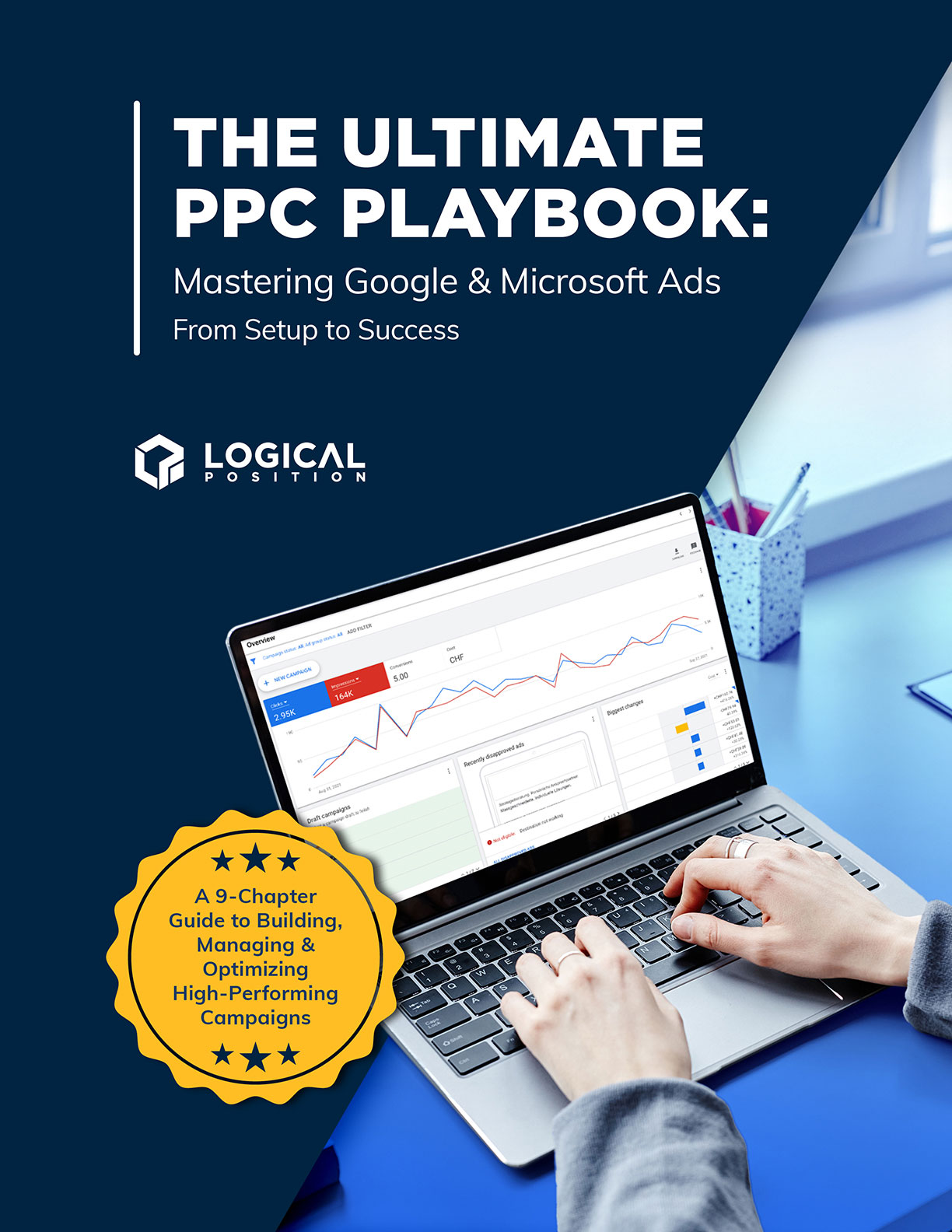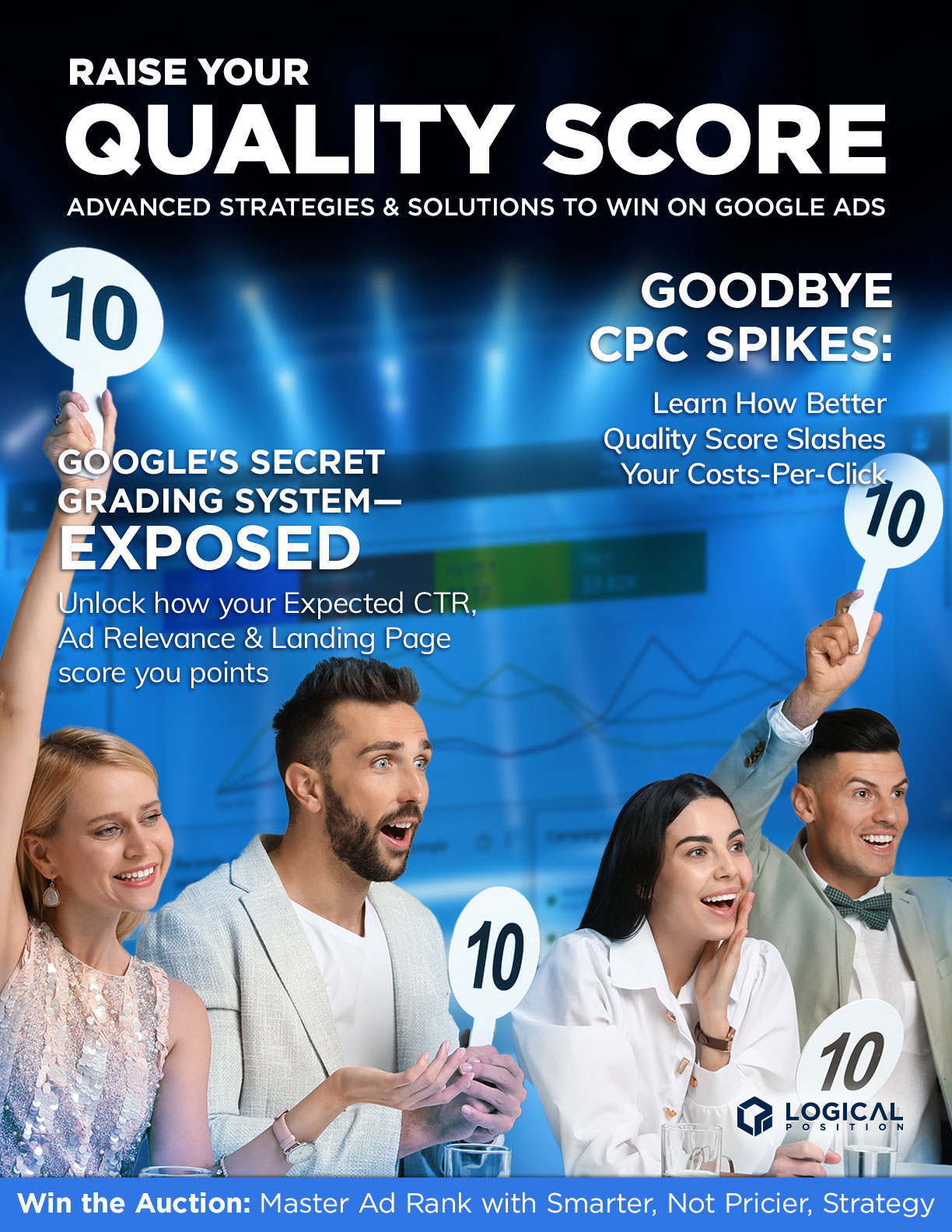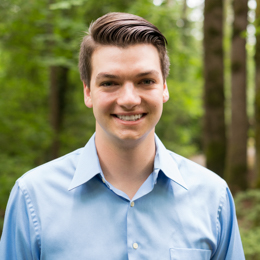IntroductionUnpredictable but Full of Opportunity
If there’s one word that defines pay-per-click (PPC) marketing in 2025, it’s unpredictable. Between new AI-driven automation, evolving attribution models, and the growing influence of video, the digital ad landscape continues to shift faster than many can keep up.
To help advertisers stay grounded, Logical Position’s paid media experts share how they’re approaching this new era of PPC—balancing data, creativity, and strategy to turn uncertainty into opportunity.
Attribution ModelsChoosing Between Data-Driven and Last Click
Attribution continues to shape how marketers interpret performance. Data-driven attribution (DDA) offers a more comprehensive and accurate picture by distributing credit across multiple touchpoints. It’s ideal for accounts where users interact with several campaigns before converting.
Still, last-click attribution has value, especially during high-traffic events like Black Friday and Cyber Monday, when quick insights are most crucial. Using it as a secondary conversion action helps teams make informed, real-time decisions without interrupting automated bidding.
“Data-driven models reveal the full customer journey… last-click shows what’s happening right now.”
This dual perspective brings balance between long-term optimization and short-term agility. Not sure which attribution model fits your business best? Explore our PPC management services to learn how our experts craft tailored strategies that drive measurable growth.

Level Up Your Attribution on Paid Social
Get a clearer picture of cross-channel performance with our guide to attribution models—from click-based to incremental lift. Learn how to measure true impact (not just credited conversions) and align your media planning, creative strategy, and measurement for meaningful results across Meta, Google, and beyond.
Get Your GuideYouTube’s EvolutionFrom Optional to Essential
YouTube has grown into a central player in PPC visibility. Even advertisers who don’t run YouTube campaigns are already present through Performance Max, which automatically serves video placements.
“If you don’t upload a video, Google will make one for you—and it won’t capture your brand the way you want it to.”
The good news is that strong YouTube content doesn’t require high production costs. Many brands are successfully repurposing Instagram Reels and Facebook videos. Others partner with creative teams, such as Logical Position’s in-house producers or trusted collaborators like Petrucci Marketing, to create branded video assets that feel authentic and platform-ready.
A thoughtful approach to YouTube content expands reach, builds trust, and strengthens every stage of the conversion funnel.
Finding the Sweet SpotBroad vs. Granular Targeting
The targeting strategy continues to evolve, and many advertisers are realizing that focusing too narrowly can limit their growth.
“Your website bestsellers and your Google Ads bestsellers might not be the same. Sometimes a niche product sparks the first click that leads to a bigger sale.”
Broad targeting creates opportunities for discovery, fills more search results, and introduces your brand to new audiences. If a product is available on your website, it’s worth making it visible to potential customers. The broader the entry points, the greater the chance to connect with qualified buyers.

Dive Deeper Into Google Ads
Unlock the full potential of your Google Ads campaigns with our PPC eBook. Whether you’re starting from scratch or scaling seasoned campaigns, this guide covers everything from account structure and conversion tracking to advanced optimization across the full search marketing suite.
Get Your GuideSmarter Lead GenerationLessons from ATC Mobility
Lead quality often defines campaign success more than lead volume. A strong example comes from ATC Mobility, a company that modifies full-size SUVs and trucks for individuals with mobility impairments, including wheelchair users.
By refining ad copy, tightening form fields, and aligning messaging across all customer touchpoints, the business experienced a noticeable decrease in unqualified submissions and an increase in conversion rate.
“Even small changes—like replacing open text fields with dropdown options—can save hours of follow-up time and attract the right leads faster.”
Clarity across every step of the customer journey helps both the sales team and the ad algorithm perform more efficiently.

Avoid Costly PPC Bidding Mistakes
High CPCs and low conversions often trace back to common bidding errors. This guide breaks down the most frequent pitfalls to turn wasted spend into qualified leads. Perfect for advertisers ready to refine their bidding strategy and improve lead quality.
Get Your GuideFrom Attribution to EfficiencyThe Value of MER and Sitewide ROI
With privacy regulations changing how data is tracked, the focus is turning to Marketing Efficiency Ratio (MER) and sitewide ROI metrics. These models measure total revenue against total marketing spend, creating a unified view across all platforms.
“Platform data tells one story… sitewide ROI tells the whole story.”
This approach accounts for multi-platform behavior, recognizing that top-funnel engagement often drives bottom-funnel conversions. For example, a user might discover a brand through Pinterest or YouTube and complete their purchase after a Google Search ad weeks later. Tracking that broader path helps advertisers invest smarter, not just faster.

Learn More Ways to Drive Effiency by
Improving Quality Score
The Raising Your Quality Score in Google Ads Resource Guide provides valuable insights on the mechanisms behind your ad campaign efficiency and overall effectiveness.
Get Your GuideMicrosoft AdsUnderrated Workhouse
Microsoft Ads remains one of the most overlooked tools in PPC. It offers access to audiences on LinkedIn, Yahoo, DuckDuckGo, and AOL, and often delivers competitive results with lower costs per click.
“Many users browse on Microsoft Edge or Bing by default… ignoring that audience leaves opportunity on the table.”
Adding Microsoft Ads as a complement to Google Ads expands visibility and captures users who might not have otherwise encountered the brand.
Websites & CRMsPower in Alignment
Website and CRM platforms play a larger role in ad performance than many realize. Tools like Shopify, BigCommerce, and WooCommerce integrate smoothly with ad networks and reporting systems, while robust CRMs, such as HubSpot or Salesforce, facilitate easy syncing of audiences, automation of follow-ups, and measurement of outcomes.
“The easier it is to connect your data, the faster you can act on it.”
Modern PPC isn’t just about ad creative; it’s about the infrastructure behind it.
Actionable Takeaways for Advertisers
“Audit your attribution settings… they may no longer reflect how people actually buy.”
“Track success across your entire marketing funnel… because every platform influences the next.”
These two principles define effective paid media in 2025: clarity in data and collaboration between channels. The brands that thrive are the ones willing to evolve with both.
ConclusionEmbrace Change, Lead with Clarity
PPC in 2025 isn’t about chasing every new feature. It’s about connecting insights across platforms, investing in creative storytelling, and measuring what truly matters.
Marketers who stay curious, flexible, and data-driven can turn volatility into momentum and uncertainty into growth.
“Adaptability isn’t just a strategy… it’s the advantage.”
Looking to refine your paid media approach for 2026? Connect with Logical Position’s team to build campaigns that are smarter, faster, and ready for whatever’s next.



